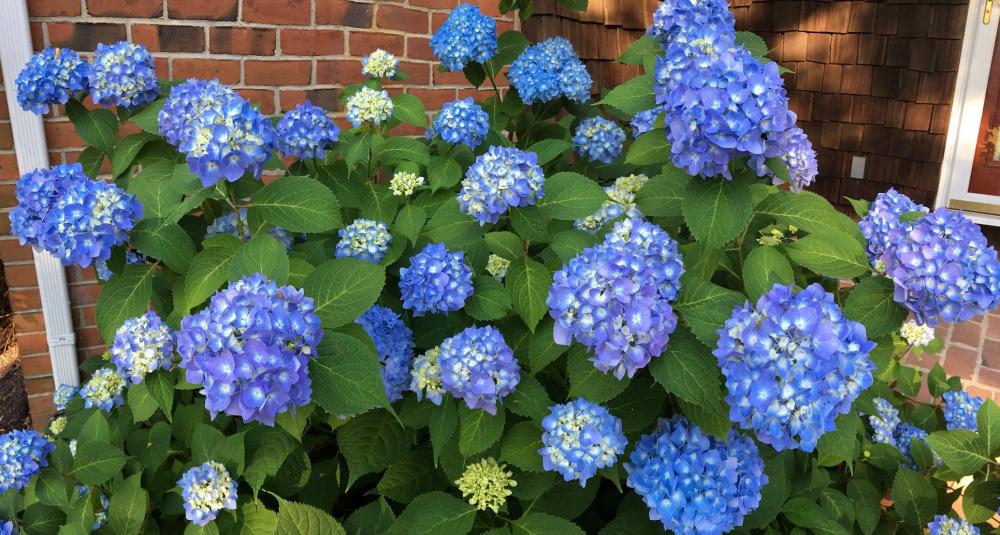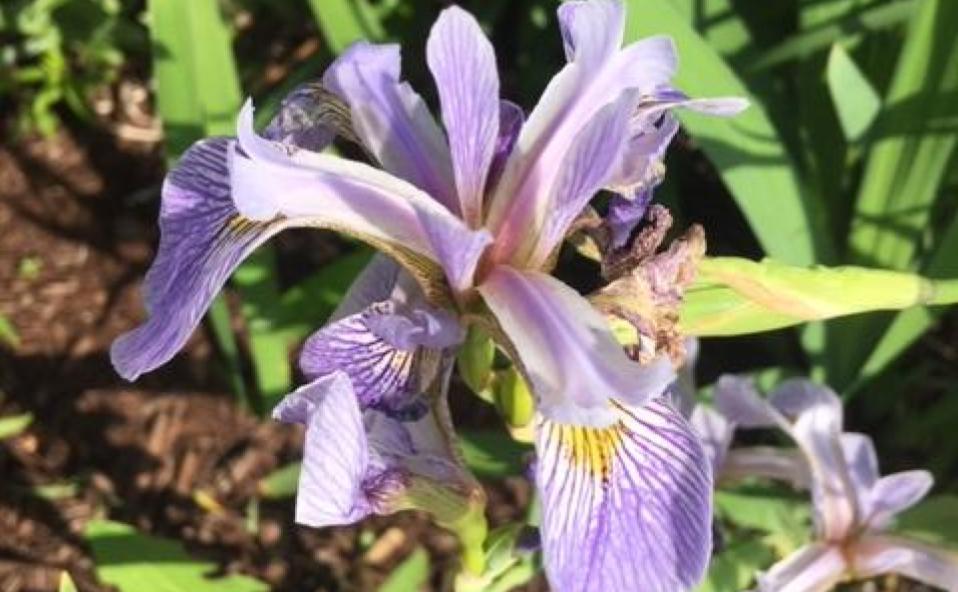You know what they say: April showers bring May flowers. However, we think that our early warm weather means April showers bring April flowers! After many weeks at home and many of us juggling teleworking with personal life, everyone is ready for that spring weather. In this month’s episode, we tackle the seasonal topics of hydrangeas, mulching, lawn care, and our features for tip/bug/native plant of the month!

Photo: Hydrangea-Flower color of the macrophylla species is dependent on soil pH. Did you know: that the actual mechanism of color variation is due to the presence or absence of aluminum compounds in the flowers. Aluminum is available to the plant in acid soils. A pH below 6.5 will produce blue flowers and a higher pH will produce pink or red flowers. Photo Credit: Rachel Rhodes
Hydrangeas are a fan favorite with large, dramatic blooms with low-effort. In our May episode, we talk about pruning hydrangeas, which is a little more complicated than you would think. Pruning practices are dependent on the type of hydrangea, but you can always remove dead, damaged, or diseased wood at any time of year! For more tips about working with hydrangeas, or to determine which hydrangea you may have, check out “A Quick Guide to Pruning Hydrangeas” from HGIC.
Lawn Care and mulching are both commonplace practices found in practically every landscape. Do not fall victim to “volcano mulching”, or piling mulch too high on shrubs and trees. We discuss mulching with organic materials that biodegrade and improve the soil. Ditch the mulching fabrics and chipped rubber, and learn why composted wood chips are preferable. Grass growth is in full swing, but do not be tempted to cut the grass too short! Turf-type tall fescue, a common turfgrass in Maryland, should be mowed at 3-4 inches high. While we would recommend waiting to seed a new lawn in fall, some overseeding or establishment may be done in the spring (see Fescue Establishment for Low Maintenance Sites for specific details).
To listen to our May episode
Timing:
Mulching (~1:37)
Pruning Hydrangeas (~11:29)
Lawn Care (~15:55)
Native Plant of the Month: “Blue flag iris”, or Iris versicolor (~20:48)
Garden Tip of the Month: “Bulbs, pruning, and warm-season crops” (~23:25)
Bug of the Month: “Spotted Lanternfly” (~39:08)

Photo: Iris veriscolor, commonly called northern blue flag, is a clump-forming iris that is native to marshes, swamps, wet meadows, ditches and shorelines. Flowering stalks rise from the clump to 30” tall in late spring, with each stalk producing 3-5 bluish-purple flowers (to 4″ wide) with bold purple veining. Clumps spread slowly by tough, creeping rhizomes. Photo credit: Mikaela Boley
If you have a garden question or topic, you like us to talk about you can email us at Gardenhoespodcast@gmail.com
For more information about University of Maryland Extension and these topics, please check out the Home and Garden Information Center website at https://extension.umd.edu/hgic
The Garden Hoes Podcast is brought to you by the University of Maryland Extension. Mikaela Boley- Senior Agent Assoc. (Talbot Co.) for Horticulture, Rachel Rhodes- Agent Assoc. for Horticulture (QA Co), and Emily Zobel- Agriculture Agent (Dorchester Co.).
University of Maryland Extension programs are open to all.
University of Maryland Extension programs are open to all people and will not discriminate against anyone because of race, age, sex, color, sexual orientation, physical or mental disability, religion, ancestry, or national origin, marital status, genetic information, or political affiliation, or gender identity and expression.



Write a Letter to the Editor on this Article
We encourage readers to offer their point of view on this article by submitting the following form. Editing is sometimes necessary and is done at the discretion of the editorial staff.